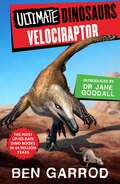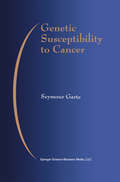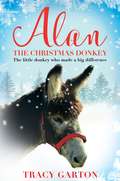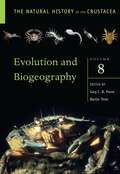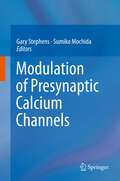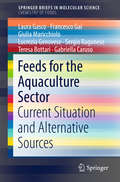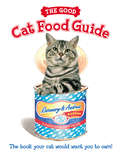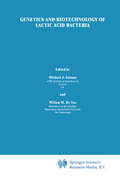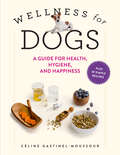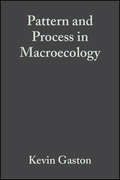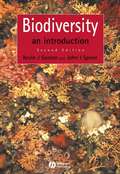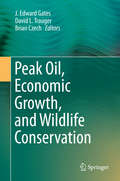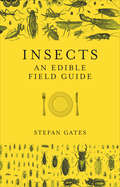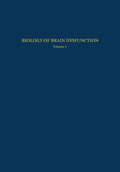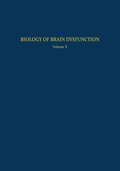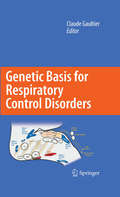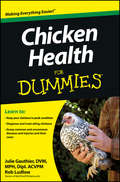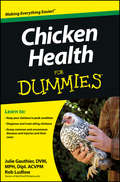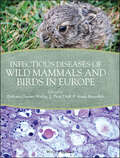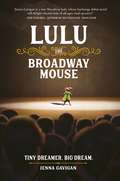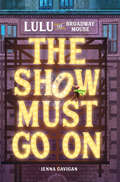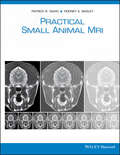- Table View
- List View
Velociraptor (Ultimate Dinosaurs)
by Ben GarrodDid you know Velociraptor was about as tall as a turkey? But could it fly? And how did it use its deadly claws? Test you dino knowledge, Ask the Experts and find out more about Velociraptor and 7 other dinosaurs in the Ultimate Dinosaur seriesPop a dinosaur in your pocket! Introductions from Chris Packham, Steve Backshall and Dr Jane Goodall. These are the most up-to-date dino books in 66 million years, also available in audio download!TV scientist, Professor Ben Garrod, is proud to be a geek as he mixes top level science and humour to prove that science is for everyone. Looking at the evolutionary arms race, prey, predators, place, time, groups and species, Ben reveals new-look dinosaurs. Additional sections include: Ask an Expert, New Science and Fossil Finder as well as quizzes to test your dinosaur knowledge.'A celebration of everything that science is really about.' NatSCA'A perfect primer for kids to learn more about the amazing "terrible lizards".' BBC Wildlife Magazine'He's the man! The genius is his knowledge; the genius is the man himself!' Chris Evans, Virgin Radio Breakfast Show'Shines a fresh, contemporary light on this ever-popular topic.' The Bookseller'Collectable and eye-catching, with plenty of diagrams and illustrations.' Books for Keeps
Genetic Susceptibility to Cancer (Developments in Oncology #79)
by Seymour GarteDespite recent progress in many areas of treatment and control, cancer remains a frightening threat to everyone. While scientists have known for decades that the majority of human cancers are caused by environmental agents such as radiation and the chemicals in cigarette smoke, not everyone who smokes gets lung cancer. Furthermore, many people who assiduously avoid all possible risk from smoking, diet, and pollution still succumb to some form of cancer later in life. Does this mean that there is an element of blind chance in the underlying mechanisms of human carcinogenesis? To what extent do genetic influences play a role in determining the cancer risk of individuals? A number of `cancer families', in which several closely related individuals have suffered from various specific forms of cancer, have been studied by genetic epidemiologists. However, for the majority of cancer cases, little or no discernible genetic influence or family history is found. Recent research has discovered that for many of these `sporadic' (non-familial) cancer cases, defects or aberrations in certain metabolic genes not previously associated with genetic cancer risk may contribute to either causing the disease or at least increasing the chances of developing cancer. It is therefore possible that much of what has previously passed for `bad luck' may turn out to be a new type of `bad genes'. Genetic Susceptibility to Cancer explains that this new idea of `bad genes' may contain an unexpected positive side. The carcinogenic effects of these metabolic genes, unlike those of the oncogenes and tumor suppressor genes that are responsible for the inherited cancer syndromes, can potentially be overcome or nullified. Genetic Susceptibility to Cancer will provide a valuable reference for health professionals, researchers, clinicians and biomedical scientists who are interested in the current thinking in this critically important area of cancer management.
Alan The Christmas Donkey: The little donkey who made a big difference
by Tracy GartonThe true story of a loveable rescue donkey who becomes a hero, perfect for animal lovers everywhere.Tracy Garton had run the Radcliffe Donkey Sanctuary for twenty years, creating a safe haven for more than sixty sick, unwanted and mistreated donkeys. But after a devastatingly difficult winter, with sky high bills, she didn't know if she could afford to carry on - or if she had the physical strength to keep going. Then, in the first week of January, the phone rang. A donkey had been abandoned 130 miles away. Rushing to his rescue Tracy found Alan - forlorn, balding and shivering - tethered up tightly in a supermarket car park. Barely able to walk on his painfully overgrown hooves, he had been left to die. Tracy ran her hands gently over Alan's protruding ribs, and whispered in his ear: 'Don't worry boy, I won't give up on you.' Over the next twelve months, as Tracy grappled with attacks from vandals and perilous flash floods and desperately tried to raise money, Alan gradually recovered - turning into a loveable rogue. As Christmas rolled around, Tracy was too worried about the future to enjoy the festive season. She had no idea that the shy skinny animal she'd rescued was going to give her the greatest gift of all . . . Alan The Christmas Donkey is a funny, warm and inspiring read.
Evolution and Biogeography: Volume 8 (The Natural History of the Crustacea)
by Gary C. B. Poore and Martin ThielThis is the eighth volume of a ten-volume series on The Natural History of the Crustacea. The volume examines Evolution and Biogeography, and the first part of this volume is entirely dedicated to the explanation of the origins and successful establishment of the Crustacea in the oceans. In the second part of the book, the biogeography of the Crustacea is explored in order to infer how they conquered different biomes globally while adapting to a wide range of aquatic and terrestrial conditions. The final section examines more general patterns and processes, and the chapters offer useful insight into the future of crustaceans.
Modulation of Presynaptic Calcium Channels
by Gary Stephens and Sumiko MochidaThis book will bring together leading international experts to discuss recent advances in basic scientific knowledge regarding the regulation of presynaptic Ca2+ channels. Importantly, Ca2+ channels represent one of the most widely modulated proteins in the body, being the target of a range of effector pathways and drugs; this range will be fully represented here. A number of therapeutic drugs target the Ca2+ channel complex, including the anti-epileptic gabapentinoid and analgesic ziconotide drugs and the pharmaceutical industry is searching for Ca2+ channel blocking drugs, particularly in the pain, epilepsy, ataxia and migraine areas. Such potential future therapies will be discussed here. Scientific disciplines will focus on electrophysiological studies, but will extend to neuroscience, genetics and biochemical areas. The work described will represent advances at the cutting edge of current neuroscience research and is timely and highly appropriate for the Springer book series.
Feeds for the Aquaculture Sector: Current Situation and Alternative Sources (SpringerBriefs in Molecular Science)
by Laura Gasco Francesco Gai Giulia Maricchiolo Lucrezia Genovese Sergio Ragonese Teresa Bottari Gabriella CarusoThis Brief discusses potential alternative sources for feeds in aquaculture fish diet, and explains that the future of aquaculture’s development is dependent on the costs of fishmeal and fish oil. Considering that the increasing costs of traditional feeds constrain this development, research is looking into alternatives, which can ensure adequate nutrition for animals’ growth. This work reviews the use of alternative plant, microbial and insect protein sources, evaluating in particular their impact on growth, nutrient digestibility, fillet quality traits and sensorial perception in the most important farmed marine and freshwater fish species. The Brief specifically summarizes the pros and cons of plant oils from oilseeds, which can on the one hand be a sustainable substitute for fish oil, but which are on the other hand less rich in omega-3 long-chain polyunsaturated fatty acids. The feeding might therefore result in an undesired reduced nutritional value of the flesh of farmed fish. The authors also explore the possible use of fishery discards as potential aquaculture feed source. Since the landing of by-catch will with the new Common Fisheries Policy (CFP) become obligatory (instead of simply returning it to the sea, often dead), suitable uses of what must not be used for human consumption can be investigated. The authors give an outlook whether this might become a sensible alternative to improve the management of discards and create more sustainable fisheries. The Brief also addresses the issues of additives to aquafeeds, such as vitamins, minerals, and antioxidants, but also immunostimulants and enzymes. The authors discuss which effects these additives may have on fish growth, welfare, reproduction and health status in aquacultures.
The Good Cat Food Guide
by Andrew Gasson Rosemary Gasson Kevin OxladeAttention cat lovers, your prayers have finally been answered! The Good Cat Food Guide is the definitive guide to what you should be feeding you feline friend. From tins to sachets, dried biscuits to meaty chunks, smelly fish to tasty chicken, the book will give you the low-down on every delicacy known to the feline tongue. Employing a crack team of tasters, the guide dishes out 'Paws and Claws' ratings to let you know what's hot and what's not. Written in a witty, tongue-in-cheek style - without ever sacrificing accuracy or objectivity - and accompanied throughout by full-colour cartoons of the tasters at work and play, The Good Cat Food Guide is essential reading for anyone who cares about their pet.
Genetics and Biotechnology of Lactic Acid Bacteria
by Michael J. Gasson Willem M. De VosA prime reference volume for geneticists, food technologists and biotechnologists in the academic and industrial sectors. Fermentations with lactic acid bacteria determine important qualities such as taste, shelf-life, and food values. New methods of food production require fast and reliable manufacture, which has led to a dramatic surge of interest in the genetic, microbiological and biochemical properties of lactic acid bacteria.
Wellness for Dogs: A Guide for Health, Hygiene, and Happiness
by Céline Gastinel-MoussourThis must-have resource is the perfect gift for every caring dog owner to ensure their pet&’s health and wellness—with advice and solutions for everything from grooming to digestion to age, plus 30 simple recipes for treats, tonics, and skin and fur care. With four color photography and chapters dedicated to physical and emotional needs, Wellness for Dogs offers all that's needed to give a new pet owner confidence or to put an experienced pet owner on a healthier path. Chapters are dedicated to daily life, mental well being, and aging. Specific and clear advice covers everything from keeping your pet's coat glossy to making sure his diet is healthy and even solutions for over-excitement and behavioral issues. It includes 30 simple recipes for treats, tonics, and skin and fur preparations.
Pattern and Process in Macroecology
by Kevin Gaston Tim BlackburnIssues of scale have become increasingly important to ecologists. This book addresses the structure of regional (large-scale) ecological assemblages or communities, and the influence this has at a local (small-scale) level. This macroecological perspective is essential for the broader study of ecology because the structure and function of local communities cannot be properly understood without reference to the region in which they are situated. The book reviews and synthesizes the issues of current importance in macroecology, providing a balanced summary of the field that will be useful for biologists at advanced undergraduate level and above. These general issues are illustrated by frequent reference to specific well-studied local and regional assemblages -- an approach that serves to relate the macroecological perspective (which is perhaps often difficult to comprehend) to the everyday experience of local sites. Macroecology is an expanding and dynamic discipline. The broad aim of the book is to promote an understanding of why it is such an important part of the wider program of research into ecology. Summarises the current macroecological literature. Provides numerous examples of key patterns. Explicitly links local and regional scale processes. Exploits detailed knowledge of one species assemblage to explore broad issues in the structuring of biodiversity.
Biodiversity: An Introduction
by Kevin J. Gaston John I. SpicerCLICK HERE TO DOWNLOAD ARTWORK This concise introductory text provides a complete overview of biodiversity - what it is, how it arose, its distribution, why it is important, human impact upon it, and what should be done to maintain it. Timely overview of the serious attempts made to quantify and describe biodiversity in a scientific way Acts as an easy entry point into the primary literature Provides real-world examples of key issues, including illustrations of major temporal and spatial patterns in biodiversity Designed primarily with undergraduate students and course lecturers in mind, it will also be of interest to anyone who requires an overview of, and entry to, the vast literature on these topics. All the figures included in the book are downloadable from the Blackwell Publishing website
Biodiversity: An Introduction
by Kevin J. Gaston John I. SpicerCLICK HERE TO DOWNLOAD ARTWORK This concise introductory text provides a complete overview of biodiversity - what it is, how it arose, its distribution, why it is important, human impact upon it, and what should be done to maintain it. Timely overview of the serious attempts made to quantify and describe biodiversity in a scientific way Acts as an easy entry point into the primary literature Provides real-world examples of key issues, including illustrations of major temporal and spatial patterns in biodiversity Designed primarily with undergraduate students and course lecturers in mind, it will also be of interest to anyone who requires an overview of, and entry to, the vast literature on these topics. All the figures included in the book are downloadable from the Blackwell Publishing website
Peak Oil, Economic Growth, and Wildlife Conservation
by J. Edward Gates David L. Trauger Brian CzechThe proposed book focuses on one of the most important issues affecting humankind in this century - Peak Oil or the declining availability of abundant, cheap energy—and its effects on our industrialized economy and wildlife conservation. Energy will be one of the defining issues of the 21st Century directly affecting wildlife conservation wherever energy extraction is a primary economic activity and indirectly through deepening economic recessions. Since cheap, abundant energy has been at the core of our industrial society, and has resulted in the technological advancements we enjoy today, the peak in world oil extraction would potentially have major impacts on civilization unless we prepare well in advance. One potential economic solution covered in the book would be a Steady State Economy with a stable population and per capita consumption, particularly in such industrialized countries as the United States. Furthermore, the lack of cheap, abundant energy directly and indirectly affects conservation efforts by professional societies and federal and state agencies, and NGOs concerned with wildlife issues. We need to recognize these potential problems and prepare, as much as possible, for the consequences stemming from them.
Insects: An Edible Field Guide
by Stefan GatesEver been tempted by the thought of trying juicy deep fried mealworms, proteinrich cricket flower, or swapping your Walkers for salt and vinegar flavoured grasshoppers? If so then you are not alone! Over 2 billion people regularly eat insects as part of their diet, and the world is home to around 1,900 edible insect species.For adventurous foodies and daring dieters comes the newest way to save the planet, eat more protein, and tickle taste buds. But this isn’t an insect cookbook. Instead it’s an informative field guide: exploring the origins of insect eating, offering tips on finding edible bugs and serving up a few delicious ideas of how to eat them once you’ve tracked them down! It includes a comprehensive list on edible insects and where to find them, how to prepare them, their versatile usage and nutritional value as well as a few recipes. A bug-eating checklist covering all known edible bugs so readers can mark off the ones they’ve eaten and seek out new delicacies concludes the book.This is a perfect introduction to the weird, wonderful, and adventurous side of entomophagy.
Biology of Brain Dysfunction: Volume 1
by Gerald E. GaullThe growth of neurochemistry, molecular biology, and biochemical genetics has led to a burgeoning of new information relevant to the pathogenesis of brain dysfunction. This explosion of exciting new information is crying out for collation and meaningful synthesis. In its totality, it defies systematic summa tion, and, of course, no one author can cope. Thus invitations for contributions were given to various experts in areas which are under active investigation, of current neurological interest, and pregnant. Although this project is relatively comprehensive, by dint of size, other topics might have been included; the selection was solely my responsibility. I believe systematic summation a virtual impossibility-indeed, hardly worth the effort. The attempt to assemble all of the sections involved in a large treatise with multiple authors inevitably results in untoward delays due to the difference in the rate at which various authors work. Therefore, the following strategy has been adopted: multiple small volumes and a relatively flexible format, with publication in order of receipt and as soon as enough chapters are assembled to make publication practical and economical. In this way, the time lag between the ideas and their emergence in print is the shortest.
Biology of Brain Dysfunction: Volume 2
by Gerald E. GaullThe growth of neurochemistry, molecular biology, and biochemical genetics has led to a burgeoning of new information relevant to the pathogenesis of brain dysfunction. This explosion of exciting new information is crying out for collation and meaningful synthesis. In its totality, it defies systematic summa tion, and, of course, no one author can cope. Thus invitations for contributions were given to various experts in areas which are under active investigation, of current neurological interest, and pregnant. Although this project is relatively comprehensive, by dint of size, other topics might have been included; the selection was solely my responsibility. I believe systematic summation a virtual impossibility-indeed, hardly worth the effort. The attempt to assemble all of the sections involved in a large treatise with mUltiple authors inevitably results in untoward delays due to the difference in the rate at which various authors work. Therefore, the following strategy has been adopted: multiple small volumes and a relatively flexible format, with publication in order of receipt and as soon as enough chapters are assembled to make publication practical and economical. In this way, the time lag between the ideas and their emergence in print is the shortest.
Biology of Brain Dysfunction: Volume 3
by Gerald E. GaullThe growth of neurochemistry. molecular biology, and biochemical genetics has led to a burgeoning of new information relevant to the pathogenesis of brain dysfunction. This explosion of exciting new information is crying out for collation and meaningful synthesis. In its totality, it defies systematic summa tion, and, of course, no one author can cope. Thus invitations for contributions were given to various experts in areas which are under active investigation, of current neurological interest, and pregnant. Although this project is relatively comprehensive, by dint of size. other topics might have been included; the selection was solely my responsibility. I believe systematic summation a virtual impossibility-indeed, hardly worth the effort. The attempt to assemble all of the sections involved in a large treatise with multiple authors inevitably results in untoward delays due to the difference in the rate at which various authors work. Therefore, the following strategy has been adopted: multiple small volumes and a relatively flexible format, with publication in order of receipt and as soon as enough chapters are assembled to make publication practical and economical. In this way, the time lag between the ideas and their emergence in print is the shortest.
Genetic Basis for Respiratory Control Disorders
by Claude GaultierBringing together top-level contributions on all aspects of the subject, this book provides an overview of the recent advances in the genetics of respiratory control in health and disease. It also shows how combined studies in humans and mouse models have helped to improve our understanding of the mechanisms that underlie genetically determined respiratory control disorders with the goal of developing new therapeutic interventions.
Chicken Health For Dummies
by Julie Gauthier Rob LudlowEverything you need to care for and keep happy, healthy chickens With directives on diagnosing and treating sick or ailing chickens, as well as general information on how to keep chickens in peak condition, Chicken Health For Dummies is your go-to guide on how to best care for and keep chickens. Inside, you'll get everything you need to know about chicken health and wellness: an encyclopedia full of common and not-so-common diseases, injuries, symptoms, and cures that chicken owners may encounter. Chicken Health For Dummies provides chicken owners with one handy, all-encompassing resource. Helps you identify potential hazards and signs of ill health in your chicken Shows you how to properly examine chickens to identify and isolate potential health issues before they spread to the rest of the flock An encyclopedia full of common and uncommon diseases, injuries, symptoms, and cures for chickens Chicken Health For Dummies joins Raising Chickens For Dummies and Building Chickens Coops For Dummies to round out the For Dummies reference library as a must-have resource for both rural and urban chicken owners.
Chicken Health For Dummies
by Julie Gauthier Rob LudlowEverything you need to care for and keep happy, healthy chickens With directives on diagnosing and treating sick or ailing chickens, as well as general information on how to keep chickens in peak condition, Chicken Health For Dummies is your go-to guide on how to best care for and keep chickens. Inside, you'll get everything you need to know about chicken health and wellness: an encyclopedia full of common and not-so-common diseases, injuries, symptoms, and cures that chicken owners may encounter. Chicken Health For Dummies provides chicken owners with one handy, all-encompassing resource. Helps you identify potential hazards and signs of ill health in your chicken Shows you how to properly examine chickens to identify and isolate potential health issues before they spread to the rest of the flock An encyclopedia full of common and uncommon diseases, injuries, symptoms, and cures for chickens Chicken Health For Dummies joins Raising Chickens For Dummies and Building Chickens Coops For Dummies to round out the For Dummies reference library as a must-have resource for both rural and urban chicken owners.
Infectious Diseases of Wild Mammals and Birds in Europe
by Dolores Gavier-Widén J. Paul Duff Anna MeredithInfectious Diseases of Wild Mammals and Birds in Europe is a key resource on the diagnosis and treatment of infectious diseases in European wildlife that covers the distinctive nature of diseases as they occur in Europe, including strains, insect vectors, reservoir species, and climate, as well as geographical distribution of the diseases and European regulations for reporting, diagnosis and control. Divided into sections on viral infections, bacterial infections, fungal and yeast infections, and prion infections, this definitive reference provides valuable information on disease classification and properties, causative agents, epidemiology, pathogenesis, and implications for human, domestic and wild animal health. Key features: • Brings together extensive research from many different disciplines into one integrated and highly useful definitive reference. • Zoonotic risks to human health, as well as risks to pets and livestock are highlighted. • Each disease is covered separately with practical information on the animal species in which the disease has been recorded, clinical signs of the disease, diagnostic methods, and recommended treatments and vaccination. • Wildlife vaccination and disease surveillance techniques are described. • Examines factors important in the spread of disease such as changing climate, the movement of animals through trade, and relaxations in the control of wide animal populations.
Infectious Diseases of Wild Mammals and Birds in Europe
by Dolores Gavier-Widen Anna Meredith J. Paul Duff Dolorés Gavier-WidenInfectious Diseases of Wild Mammals and Birds in Europe is a key resource on the diagnosis and treatment of infectious diseases in European wildlife that covers the distinctive nature of diseases as they occur in Europe, including strains, insect vectors, reservoir species, and climate, as well as geographical distribution of the diseases and European regulations for reporting, diagnosis and control. Divided into sections on viral infections, bacterial infections, fungal and yeast infections, and prion infections, this definitive reference provides valuable information on disease classification and properties, causative agents, epidemiology, pathogenesis, and implications for human, domestic and wild animal health. Key features: • Brings together extensive research from many different disciplines into one integrated and highly useful definitive reference. • Zoonotic risks to human health, as well as risks to pets and livestock are highlighted. • Each disease is covered separately with practical information on the animal species in which the disease has been recorded, clinical signs of the disease, diagnostic methods, and recommended treatments and vaccination. • Wildlife vaccination and disease surveillance techniques are described. • Examines factors important in the spread of disease such as changing climate, the movement of animals through trade, and relaxations in the control of wide animal populations.
Lulu the Broadway Mouse (The Broadway Mouse Series)
by Jenna GaviganRatatouille meets Broadway in this charming new middle grade novel about a little mouse with big dreams. Lulu is a little girl with a very big dream: she wants to be on Broadway. She wants it more than anything in the world. As it happens, she lives in Broadway's Shubert Theatre; so achieving her dream shouldn't be too tricky, right? Wrong. Because the thing about Lulu? She's a little girl mouse. When a human girl named Jayne joins the cast of the show at the Shubert as an understudy, Lulu becomes Jayne's guide through the world of her theatre and its wonderfully kooky cast and crew. Together, Jayne and Lulu learn that sometimes dreams turn out differently than we imagined; sometimes they come with terms and conditions (aka the company mean girl, Amanda). But sometimes, just when we've given up all hope, bigger and better dreams than we'd ever thought could come true, do.
Lulu the Broadway Mouse: The Show Must Go On (The Broadway Mouse series)
by Jenna GaviganLulu's show has just received its closing notice. Lulu and the rest of the company are devastated. Lulu takes readers back in time to just after she made her onstage debut and of Lulu and Jayne rising in popularity and esteem. However, there is one critic who is determined to break Lulu's career. With additional casting drama happening with Jayne, Amanda, and new girl Olivia, the news about the show closing comes as a real blow to everyone. When Benji, Lulu's brother, comes up with an idea on how to boost ticket sales, the company members hit the streets, desperate to save the show from closing. But will Lulu and Stella be able to stop the nasty critic from completely ruining Lulu's dreams and those of the rest of the cast?
Practical Small Animal MRI
by Patrick R. Gavin Rodney S. BagleyPractical Small Animal MRI is the seminal reference for clinicians using Magnetic Resonance Imaging in the diagnosis and treatment of veterinary patients. Although MRI is used most frequently in the diagnosis of neurologic disorders, it also has significant application to other body systems. This book covers normal anatomy and specific clinical conditions of the nervous system, musculoskeletal system, abdomen, thorax, and head and neck. It also contains several chapters on disease of the brain and spine, including inflammatory, infectious, neoplastic, and vascular diseases, alongside congenital and degenerative disorders.
